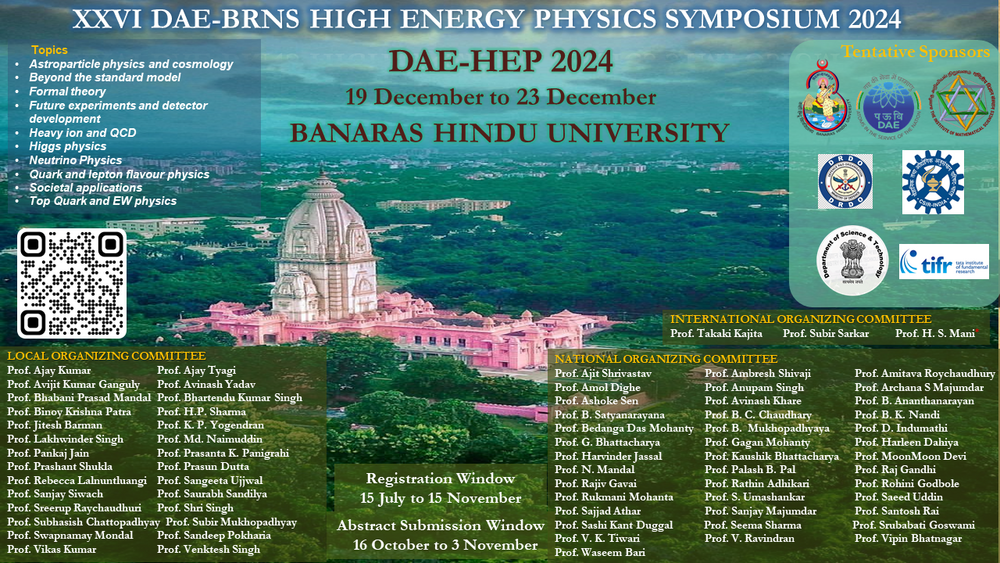Speaker
Description
A phase transition in the early Universe, at a critical temperature $T_*$, induces a temperature dependent mass for right handed neutrinos (RHNs) that eventually stabilizes to a constant value through the Higgs vacuum expectation value ($vev$) after electroweak symmetry breaking (EWSB). This dynamical variation in the mass of RHNs with temperature enables us to achieve RHN mass below the electroweak scale ($\sim 100$ GeV) at zero temperature while generating a sufficient amount of lepton asymmetry near $T_*$, which, through the sphaleron process, can account for the observed baryon asymmetry of the Universe (BAU). Therefore, such a low mass of RHNs at zero temperature enhances its detection probability. Notably, this framework also has the potential to predict a primordial lepton asymmetry generated after EWSB, as hinted by measurements of helium abundance, shedding light on a potential link to the early phase of leptogenesis.
| Field of contribution | Phenomenology |
|---|

